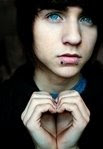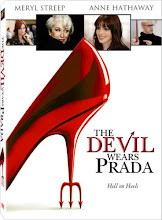
ฝรั่งเศสเป็นผู้นำทางเศรษฐกิจอันดับที่ 4 ของโลกรองจากสหรัฐอเมริกา ญี่ปุ่นและเยอรมัน ฝรั่งเศสอยู่ในอันดับเดียวกับสหราชอาณาจักร (ผลิตภัณฑ์มวลรวมฝรั่งเศสมีมูลค่ามากกว่าร้อยละ 5 ของผลิตภัณฑ์มวลรวมของโลก) การค้าต่างประเทศของฝรั่งเศสคิดเป็นมูลค่าร้อยละ 6 ของการค้าทั่วโลกมีผลทำให้ฝรั่งเศสเป็นประเทศที่มีความสำคัญด้านเศรษฐกิจเป็นอันดับแรกๆ
ฝรั่งเศสเป็นผู้ส่งออกอันดับที่ 4 ของโลก ทั้งยังเป็นผู้ส่งออกผลิตผลภาคเกษตรและภาคบริการอันดับที่ 2 และผู้ส่งออกผลิตผลด้านอุตสาหกรรมอันดับที่ 4 การส่งสินค้าออกของประเทศฝรั่งเศสคิดเป็นร้อยละ 21 ของผลิตภัณฑ์มวลรวมในประเทศซึ่งมีมูลค่าสูงมากเมื่อเทียบกับประเทศญี่ปุ่น (ร้อยละ 10) และสหรัฐอเมริกา (ร้อยละ 9)
เศรษฐกิจของฝรั่งเศสซึ่งขาดดุลมาเป็นเวลานานเริ่มได้เปรียบดุลทางการค้าตั้งแต่ปี 2535 การขายสินค้าประเภทต่างๆ ที่ทำให้ดุลการค้าของประเทศฝรั่งเศสปรับตัวขึ้นมีดังนี้
- การขายสินค้าในส่วนที่เกี่ยวข้องกับงานสร้างอากาศยาน เครื่องใช้สำนักงาน ชิ้นส่วนอุปกรณ์อิเล็กทรอนิกส์และสินค้าด้านอุตสาหกรรม
- การขายสินค้าบริโภคทางการเกษตร
- สินค้ายุทโธปกรณ์
- สินค้าฟุ่มเฟือย
- เวชภัณฑ์และเคมีภัณฑ์
นอกจากนี้แล้ว ภาคบริการไม่ว่าจะเป็นการท่องเที่ยวหรือการเงิน ประเทศฝรั่งเศสได้เปรียบดุลประเทศ อื่นๆ เป็นอันมาก
โดยทั่วไปการขาดดุลของฝรั่งเศสเกิดขึ้นเนื่องจาก
- การซื้อสินค้าด้านพลังงาน
- การซื้อสินแร่
- การซื้ออาหารจากประเทศเขตร้อน
- การซื้อผลิตภัณฑ์อุตสาหกรรมบางประเภทอาทิเช่น สิ่งทอ เครื่องนุ่งห่ม หนังฟอกและหนังดิบ รองเท้า ฯลฯ
ฝรั่งเศสเป็นประเทศที่ลงทุนมากเป็นอันดับที่ 3 ของโลกรองจากสหรัฐอเมริกาและสหราชอาณาจักร บริษัททั้งหมด 16,000 แห่งทั่วโลกซึ่งมีผู้ถือหุ้นเป็นชาวฝรั่งเศสมีพนักงานทั้งหมด 2.6 ล้านคน สหรัฐอเมริกาซึ่งเป็นประเทศที่ฝรั่งเศสเข้าไปลงทุนมากที่สุดมีจำนวนบริษัททั้งสิ้น 1,850 บริษัท และพนักงาน 370,000 คน ในขณะที่ประเทศเยอรมัน (1,100 บริษัท พนักงาน 224,000 คน) สหราชอาณาจักร (1,200 บริษัท พนักงาน 221,000 คน) และสเปน (1,000 บริษัท พนักงาน 218,000 คน) มีจำนวนบริษัทฝรั่งเศสและพนักงานมากพอๆ กัน
พนักงานเหล่านี้มีจำนวนมากที่สุดอยู่ในสหภาพยุโรปและคิดเป็นร้อยละ 45 ของพนักงานทั้งหมด ในประเทศที่กำลังพัฒนาถึงแม้ว่าการลงทุนของบริษัทฝรั่งเศสในบราซิลมีมากกว่าประเทศอื่นมาก แต่ในทางกลับกันการลงทุนของประเทศฝรั่งเศสในอเมริกาใต้กลับหยุดขยายตัว เช่นเดียวกับในแอฟริกาซึ่งฝรั่งเศสเข้าไปลงทุนมาเป็นเวลานานแล้ว ทั้งนี้ตรงกันข้ามกับการลงทุนในประเทศทวีปเอเชียซึ่งมีแนวโน้มเพิ่มขึ้นในช่วงหลายปีที่ผ่านมา
ฝรั่งเศสเป็นประเทศที่ต้อนรับนักลงทุนจากต่างประเทศอย่างเปิดกว้างเช่นเดียวกัน สหรัฐอเมริกาเป็นประเทศที่เข้าไปลงทุนในฝรั่งเศสมากเป็นอันดับ 1 (และสร้างงานให้คนถึง 8,000 คนในปี 2544) รองจากประเทศดังกล่าวคือเยอรมันและสหราชอาณาจักร ในปี 2544 บริษัทจากประเทศสมาชิกสหภาพยุโรปได้สร้างงานให้คนมากกว่า 13,000 คนซึ่งนับว่ามากกว่าครึ่งหนึ่งของจำนวนการจ้างงานทั้งหมด อย่างไรก็ตามการลงทุนจากประเทศในทวีปอเมริกาเหนือและสหภาพยุโรปลดลงถึงร้อยละ 30 ยิ่งไปกว่านั้นสถานการณ์การลงทุนของแต่ละประเทศแตกต่างกันอย่างสิ้นเชิง (เยอรมันลดการลงทุนถึงร้อยละ 51 และอิตาลีร้อยละ 52 ในขณะที่การลงทุนของเนเธอร์แลนด์เพิ่มขึ้นร้อยละ 20 และสเปนร้อยละ 50)
จำนวนของการลงทุนรายใหญ่(ซึ่งมีการจ้างงานมากกว่า 500 คน)มีแนวโน้มว่าจะลดลง ในขณะที่จำนวนของการลงทุนรายย่อยซึ่งมีการจ้างงานเพียง 10-20 คนได้เพิ่มขึ้นถึงร้อยละ 30 สภาวการณ์นี้เป็นผลจากการชะลอตัวของการลงทุนมูลค่าสูงหลังจากความล้มเหลวของภาคเทคโนโลยีสมัยใหม่กอรปกับเหตุการณ์วันที่ 11 กันยายน ณ ประเทศสหรัฐอเมริกา
ในขณะที่ตลาดด้านเทคโนโลยีทางคอมพิวเตอร์และการสื่อสารชะลอการขยายตัวลงอย่างมาก การลงทุนธุรกิจแบบเก่าหลายประเภทอาทิเช่น ศูนย์วิจัย สำนักงานพาณิชย์ บริษัทดูแลขั้นตอนการผลิต ฯลฯ กลับมีจำนวนสูงขึ้น
ภาคธุรกิจที่ประสบความสำเร็จมากที่สุดคืออุตสาหกรรมรถยนต์ สินค้าแปรรูป ส่วนประกอบ อิเล็กทรอนิกส์ อุปกรณ์ไฟฟ้า และเครื่องมือทางการแพทย์และศัลยแพทย์
ในปี 2544 ส่วนต่างๆ ของประเทศฝรั่งเศสที่มีการลงทุนจากต่างประเทศมากที่สุดได้แก่ Ile-de-France, Nord-Pas-de Calais, Provence-Alpes-Côte-d’Azur และ Midi Pyrénées










